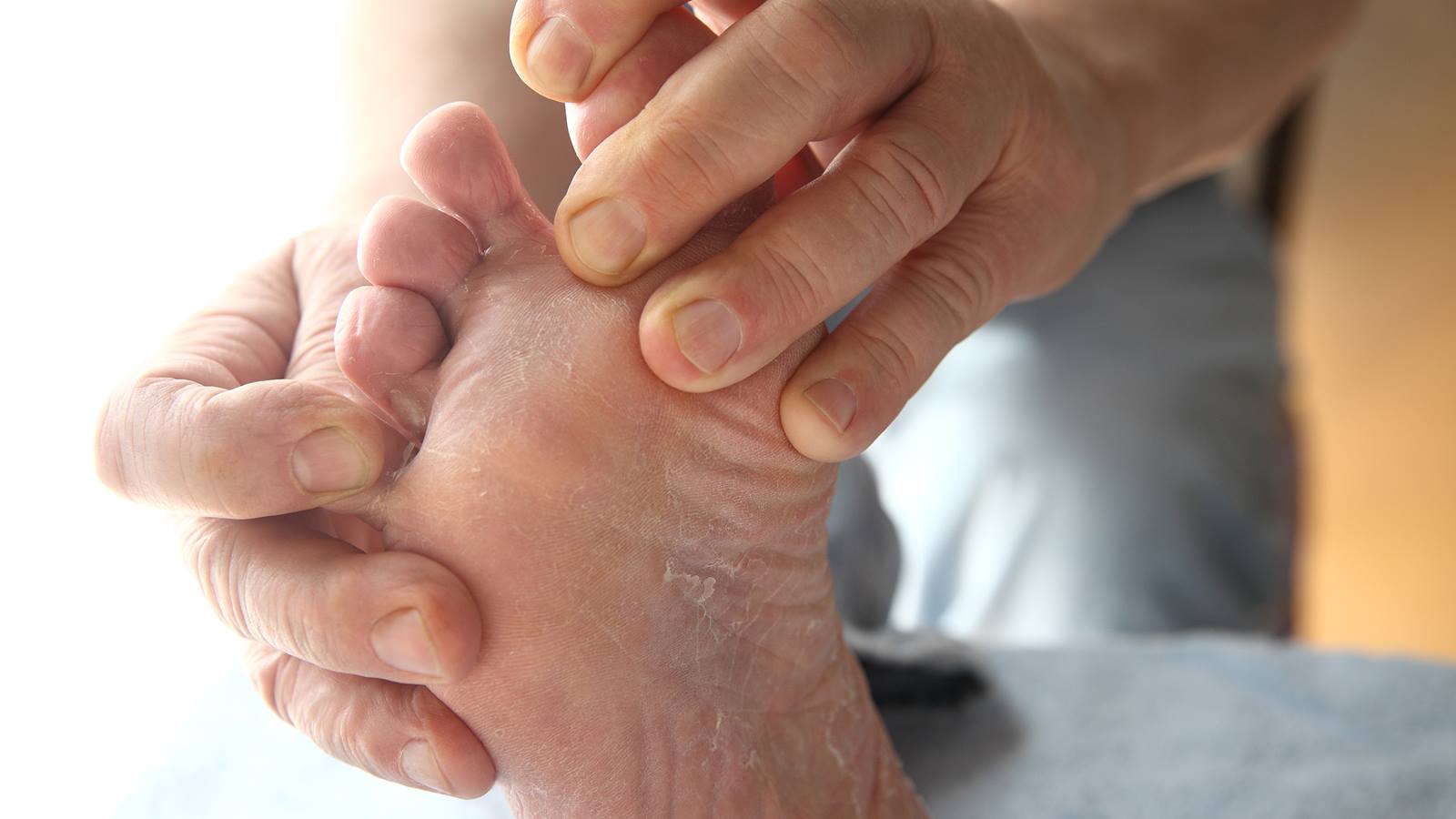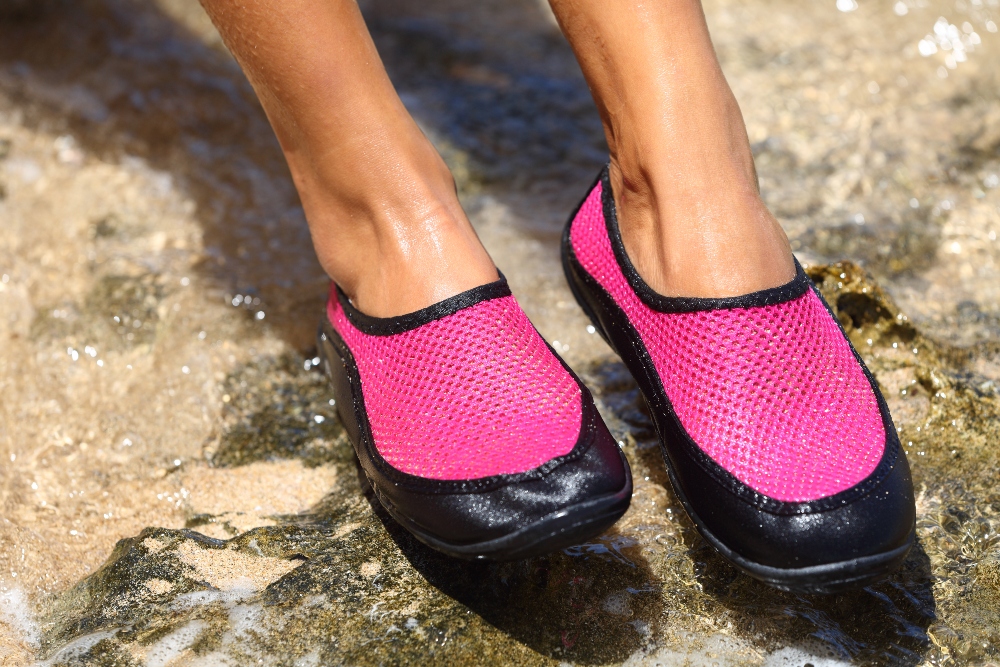How to Get Rid of Athlete's Foot in Shoes At Home
Athlete’s foot is one of those annoying problems that can sneak up on you and make life uncomfortable. If you’ve dealt with it before, you know how stubborn it can be. This guide will show you how to get rid of it in your shoes so your feet stay fresh and healthy.
It’s not exactly fun to deal with, but there’s no need to stress—we’ve got you. We’ll go over what causes it, how to keep it from coming back, and the best ways to make sure your shoes don’t turn into a breeding ground for fungus.
If you want a solid pair of shoes that help prevent issues like this, Vessi is worth checking out. They’re fully waterproof, comfortable, and well-designed. Plus, their antibacterial insoles help stop fungus and bacteria from settling in.
For now, let’s focus on keeping your feet happy and fungus-free!
What Is an Athlete's Foot?

Image Credits: intermountainhealthcare.org
Athlete’s foot is a fungal infection that affects the skin on your feet. The medical name for it is tinea pedis, but most people just call it athlete’s foot. It’s caused by fungal spores called dermatophytes, which love warm, damp environments—like the inside of your shoes. If you’ve ever dealt with itchy, red, or flaky skin on your feet, there’s a good chance you’ve had it.
The infection manifests in three ways:
-
Interdigital (toe web) athlete's foot: This is the most common type, usually popping up between your fourth and fifth toes. The skin can turn red or brown, get scaly, crack, or even blister. Sometimes, it gets soft, mushy, and starts to smell—not exactly ideal.
-
Moccasin-type athlete's foot: This one affects the soles and can spread to the heels and sides of your feet. It often starts with dry, itchy, peeling skin that follows the shape of a moccasin. Over time, the skin can thicken and crack, making it even more uncomfortable. It can also mess with your toenails, making them thick, brittle, and discolored.
-
Vesicular (blisters) athlete's foot: This is the least common type, but it’s definitely unpleasant. It shows up as fluid-filled blisters on the soles, between the toes, or even on top of the foot. In some cases, it comes with a bacterial infection, which can lead to red, swollen, pus-filled blisters. Not fun.
The best way to avoid athlete’s foot (and other annoying infections like toenail fungus) is to keep your feet clean and dry. Since fungus thrives in warm, damp spots, taking care of both your feet and your shoes makes a big difference.
So, how does it spread through shoes? When your shoes stay damp, they create the perfect setup for fungus to grow. If you’re not careful, the infection can stick around, going from your feet to your shoes and right back again.
To keep that from happening, here are a few things you’ll want to avoid:
How to Prevent Athlete's Foot Fungus

Image Credits: footandanklegroup.com
Since athlete’s foot spreads so easily, the best thing you can do is stop it before it starts. Here are some solid ways to keep your feet fungus-free:
1. Prioritize clean and dry feet
Fungus loves moisture, so don’t give it a place to settle in. Wash your feet daily with soap and water, then dry them completely—especially between your toes. Damp skin is practically an open invitation for an infection. And if your socks are sweaty, swap them out. Wearing the same damp socks all day is just asking for trouble.
2. Choose breathable footwear
Good airflow makes a huge difference. Shoes that trap heat and moisture create the perfect environment for fungus to thrive. Vessi shoes, for example, are waterproof and breathable, meaning they keep moisture out while still letting air circulate. That’s a win-win for your feet.
3. Protect your feet in public areas
Locker rooms, swimming pools, and communal showers? Prime real estate for athlete’s foot. Always wear flip-flops, water shoes, or anything that keeps your feet from touching the floor directly. It only takes a second to pick up an infection, so don’t take the risk.
4. Air out your shoes
Your shoes need a break, too. Take them off when you’re home, remove the insoles, and give them time to air out—especially if you’ve been sweating in them all day. A little ventilation goes a long way in keeping fungus from setting up camp.
5. Exercise caution in shared spaces
If someone in your household has athlete’s foot, you’ll need to be extra cautious. Never share socks, shoes, or towels, and make sure showers and bathroom floors get cleaned regularly. Fungal spores can linger, and you don’t want them hitching a ride onto your feet.
6. Avoid wearing the same shoe daily
Wearing the same pair every day traps moisture, giving fungus a cozy place to grow. Switch between different pairs to give each one time to fully dry out before you wear them again. Also, store your shoes in a dry, ventilated area—damp, dark closets are basically a fungus paradise.
7. Wear moisture-wicking socks
Not all socks are created equal. Moisture-wicking fabrics like synthetic blends, wool, or bamboo help pull sweat away from your skin, keeping your feet drier. Cotton, on the other hand, soaks up moisture and holds onto it, which is exactly what you don’t want.
A little effort goes a long way in keeping your feet healthy. Stay dry, stay smart, and don’t give fungus a chance to move in!
Effective Cleaning Techniques to Disinfect Shoes

Image Credits: shoewash.ca
To keep Athlete’s foot at bay, one of the best things you can do is make sure your shoes stay clean and dry. Here’s how you can give your shoes a proper clean to kick out that pesky fungus:
Step 1: Remove insoles and laces
Start by pulling out the insoles and laces. This will give you access to the spots that could be hiding fungus and make cleaning way easier.
Step 2: Mix a cleaning solution
Grab some mild detergent and warm water, then fill up a basin or sink. Don’t go for harsh chemicals or bleach—they’ll mess up your shoes. Stick to something gentle.
Step 3: Gently scrub your shoes
Use a soft brush to give your shoes a nice scrub, inside and out. Focus on those spots that might have come in contact with the fungus. Scrubbing well will help get rid of any leftover spores that could lead to another infection.
Step 4: Rinse thoroughly
Once you’ve scrubbed away all the gunk, rinse your shoes well with clean water. You don’t want any soap residue hanging around—it could be a breeding ground for fungus.
Step 5: Dry your shoes
Let your shoes air dry—don’t stick them in direct sunlight or heat sources, or you might end up with shrunk, faded shoes. A fan nearby can help speed things up and keep them from smelling funky..
Step 6: Clean insoles and laces
Toss the laces and insoles in your cleaning solution, too. Give them a gentle scrub, rinse thoroughly, and let them dry separately.
Step 7: Use antifungal spray (optional)
For an extra layer of protection, spray your shoes with an antifungal spray once they’re all dry. It’ll help prevent fungus from returning. If you’re feeling fancy, you could also try a UV shoe sanitizer to zap any remaining bacteria or fungus in minutes.
How to Treat Athlete's Foot

Image Credits: modernfellows.com
Got athlete’s foot? Don’t stress—there are a few things you can do to get rid of that fungus. Here’s how to tackle it:
Tip 1: Explore over-the-counter remedies
You don’t need a prescription to take care of this. Head to the drugstore for antifungal powders, creams, or sprays with ingredients like clotrimazole, miconazole, or terbinafine. Just follow the instructions and be patient—use them for the full course, and you’ll start seeing results.
Tip 2: Try home remedies
If you’re into natural fixes, you’ve got options. Check out these DIY treatments that might help:
-
Cornstarch or baking soda powder: Keep your feet dry by dusting them with cornstarch or baking soda. It’ll absorb moisture and help keep the fungus from spreading.
-
Bitter orange oil: Sounds fancy, but it works. Mix it with a little coconut oil and rub it on the affected areas. It can help fight off the fungus.
-
Baking soda soak: Dissolve some baking soda in warm water and soak your feet. Not only does it fight odors, but it can help reduce fungal growth, too.
-
Talcum powder: A sprinkle of this on your feet can help keep them dry, making it harder for the fungus to get comfortable.
These simple fixes can make a difference in clearing up that pesky athlete’s foot. Keep at it, and your feet will thank you.
Tip 3: Seek prescription treatments
If athlete's foot refuses to pack its bags after you've tried home remedies or over-the-counter treatments, it might be time to call in the big guns. When the usual tricks aren’t cutting it, a healthcare professional can step in with something stronger, like a prescription-only antifungal cream or even oral meds if the infection's being stubborn.
And if you do go the prescription route, don't slack off! Follow your doctor's instructions to the T. Even if your feet start feeling better halfway through, don’t quit the meds early. Finishing the whole treatment ensures the fungus doesn’t just take a quick vacation, only to come back with a vengeance.
Tip 4: Wear the right shoes
When dealing with infected feet, here are some key shoe considerations to keep in mind:
-
Choose materials such as mesh or leather to allow free airflow and avoid having sweaty feet.
-
It is also advisable not to wear shoes that have a narrow toe box or have high heels. These designs can worsen conditions such as blisters and calluses in the affected areas.
-
Try to buy shoes with better arch support and shock absorption to help ease the pressure on your feet.
-
Check if your shoes are comfortable and not too tight around the shoe, as this will cause friction and blisters.
Here are some examples of shoes suitable for infected feet:
-
Breathable mesh sneakers
-
Leather shoes, like loafers or oxfords
-
Supportive and cushioned running shoes
-
Wide-width shoes to accommodate swelling or bandages
-
Wear sandals with a secure fit and good arch support
Keep Your Shoes Fresh and Fungus-Free with Vessi Insoles

Image Credits: packhacker.com
At Vessi, we’ve got a secret weapon for sweaty feet and those stinky shoe situations—our antibacterial insoles. They’re like a built-in defense against all the stuff you don’t want growing in your shoes. Not only do they help keep your feet fresh, but they also fight off fungi and bacteria before they even get the chance to take over.
These insoles are designed to keep the microbes at bay so your feet stay odor-free and happy. Plus, when they’re in your shoes, they add that extra layer of protection, stopping fungus from burrowing deeper into your feet.
Kicking Athlete's Foot to the Curb: Our Final Thoughts
The key to keeping athlete’s foot away is really about being proactive. Knowing what the fungus loves (like damp, warm places) and making sure your feet and shoes are clean and dry will do wonders. With the right shoes, some simple habits, and a little care, you can dodge that infection and keep your feet in top shape.

